OTT platforms are extremely popular all over the world — just look at the graph below.
For example, in the US 147 million people were already using Netflix in 2018, and by 2020 this number had risen to 170 million viewers.
It is projected to rise to 182 in 2024.
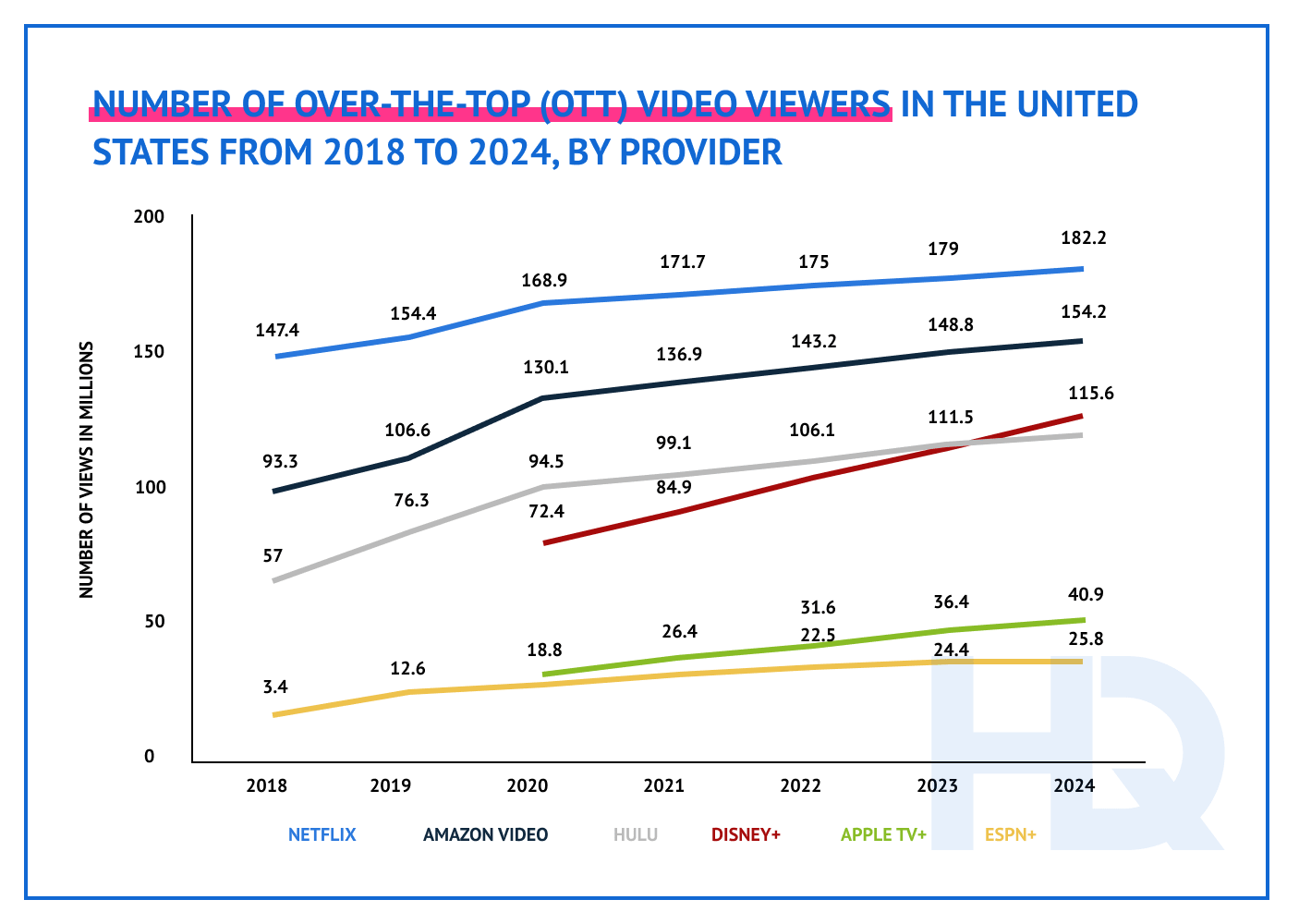
With this rising popularity, monetization of video streaming development has become a matter of time.
And this is the topic of today’s article: how exactly do OTT services make money?
Let’s find out.
What is the OTT platform?
An OTT platform is a type of media service. This term is closely related to SVoD platforms — Subscription-based Video-on-Demand services.
Over-the-top streaming services offer viewers different types of content directly, via the Internet.
OTT streaming services ignore the cable, broadcast, and satellite television platforms that often control the distribution of content.
OTTs are also popular among people who prefer specific content and don’t need access to a whole bunch of TV channels. OTT services offer specialty channels that are delivered through the public Internet connection, rather than a private network paired with proprietary hardware like a set-top box.
How do users access the streamed content?
Hire a dedicated team of video development professionals
You have found your perfect dedicated team here – at HQSoftware, we know how to develop perfect OTT platforms with fault-free performance.
Anna Halias
Business Development Manager,
HQSoftware
An OTT streaming service is usually available via:
- Web apps or websites
- Mobile apps
- Apps for media players, even including game consoles such as Play Station
- Smart TVs
Everything you need to access an OTT streaming service is an Internet connection and a suitable device. It’s really that simple.
So then, how do OTT platforms make money?
What monetization models are available to OTT companies?
There are several OTT platform monetization methods:
- SVoD, Subscription Video on Demand
- TVoD, Transactional Video on Demand
- AVoD, Advertising Video on Demand
- Hybrid methods

Let’s take a closer look at them.
Subscription Video on Demand
This is probably the most popular OTT monetization model.
The users of your app pick one of the subscription plans, which typically run month to month. Almost all app content is then available to the viewer, except for any you additionally charge for.

Some OTT platform providers have streaming services with integrated payment systems for the user’s convenience.
Transactional Video on Demand, or Pay per View
This is the most efficient OTT monetization system in terms of generating profit, but generally not the favorite of users.
Here, users have to pay for every piece of content they watch. Sometimes this model is used alongside SVoD — users can have a subscription running and still have to pay for particular content.
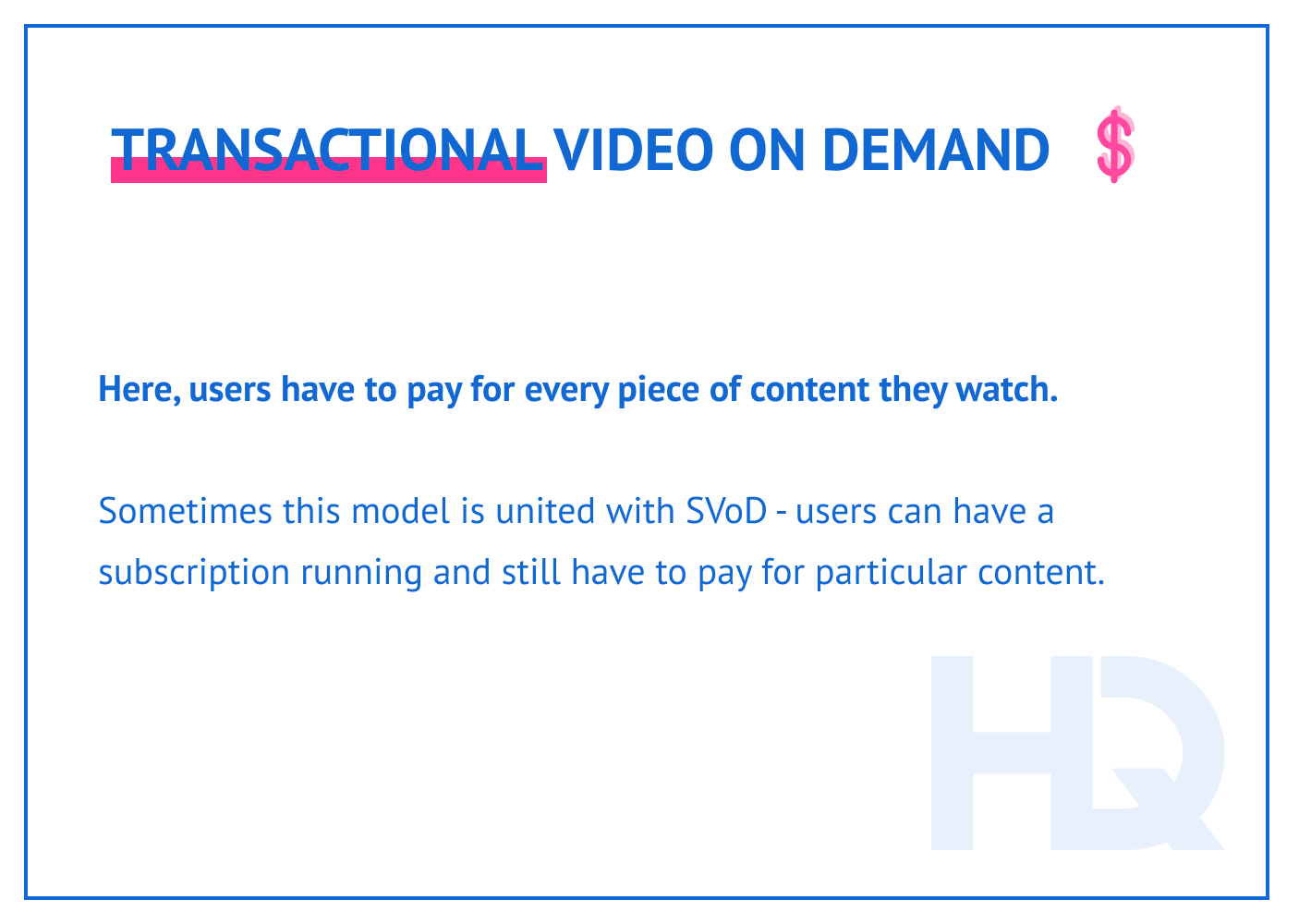
Sometimes, prices are lower for the subscribers.
Advertising Video on Demand, or Advert-supported
This monetization model implies that users can watch all content for free. They don’t have to pay for the subscription or every piece of content.
But in exchange for free content, users have to watch ads in the application. Sometimes the ads are built into the content itself — the user watches a video, which is paused occasionally to show a short ad.
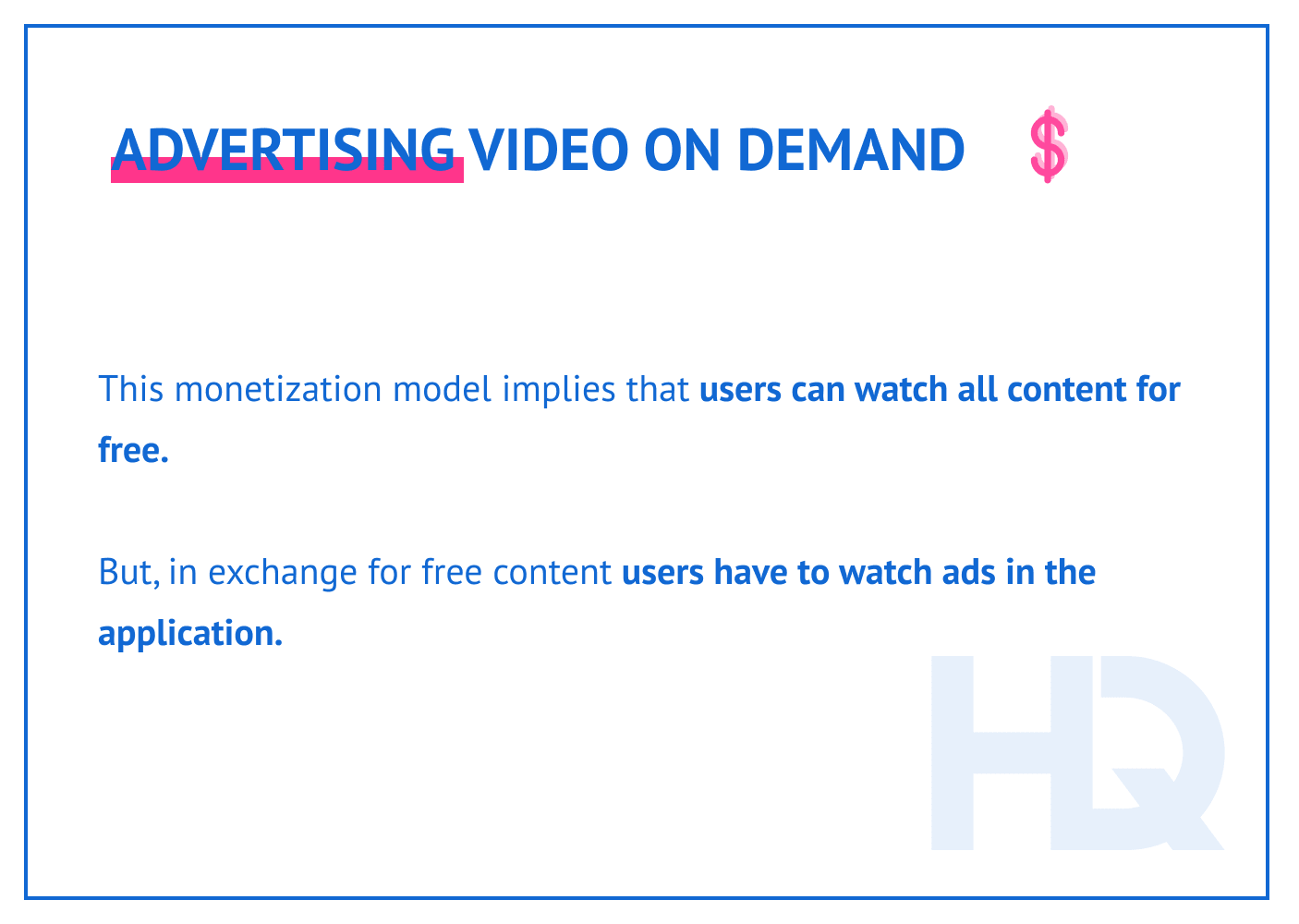
Hybrid models
Some hybrid models of OTT monetization combine two or three of the previous models in some way.
The most popular combinations are:
- The user buys a subscription that allows them to consume the majority of content. Some exclusive materials are available via the pay-per-view model.
- The user can buy a standard subscription to watch content, but will still see ads. At the same time, advanced subscriptions are offered that eliminate ads and allow for unhindered content navigation.

These OTT monetization methods all do the job.
But how do you pick the right one for your application?
How to Сhoose the Monetization Model Best for Your OTT Platform
The answer to this vital question will determine the success of your OTT application. In other words, how much money you’ll be able to earn?
To pick the right OTT video monetization model let’s examine the advantages of every one.
Advantages of SVoD Monetization
This monetization model is preferred by the majority of OTT businesses. Such industry giants as Netflix and Amazon Prime prefer exactly this model because of the following reasons:
- This payment format is extremely popular among users – up to 75% of households in the US have a subscription to services like Netflix and similar.
- This format is also compelling for users because of its convenience. It provides people with the ability to pay a fair price and access an unlimited amount of content.
- Subscriptions are flexible and can offer different additional services.
SVoD model is good for services that can entertain users with different types of content in the long term. Recurring content like TV series is the best example of content that will keep the audience subscribed for a long time.
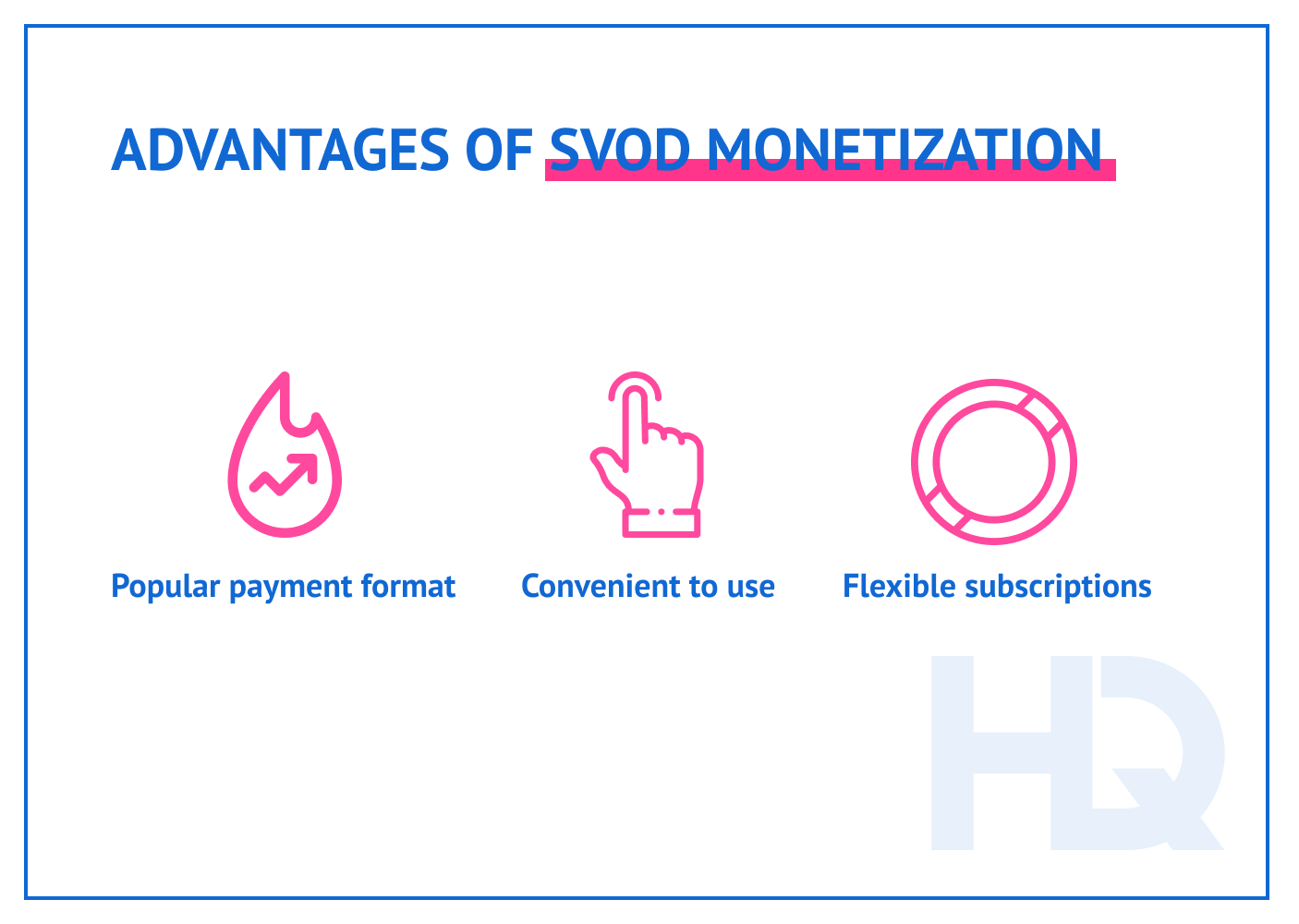
Advantages of TVoD Monetization
If you want to charge users only for the content they view, this model suits you the best. Streaming services that specialize in movies prefer this model to others.
The benefits are:
- Users only pay for the content they actually want to consume.
- Users get the ability to access exclusive materials before they are released anywhere else.
- Works great for the entertainment and sports industry with seasonal content.
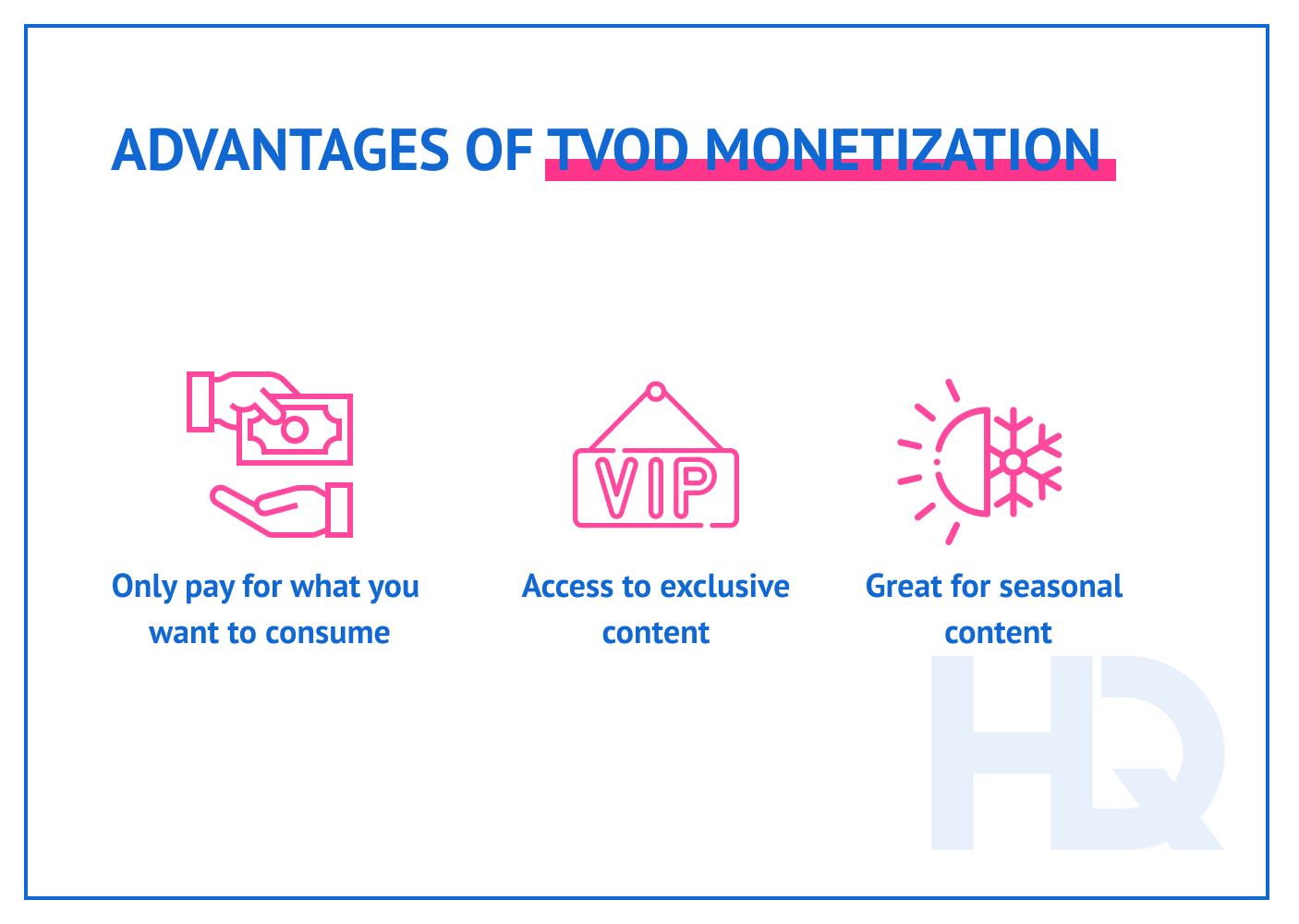
TVoD model works best for services that have some exclusive content to offer: platform-exclusive movies, series that start on your platform only, and so on.
Though OTT platforms rarely use TVoD in a pure form – it is often combined with other monetization models for better performance.
Advantages of AVoD Monetization
AVoD monetization model is also rarely used as the only way to monetize the platform. Combined with SVoD or TVoD it makes a lot more profit.
But there are some benefits too:
- Users sometimes prefer to watch ads and get content for free or with a discount rather than paying for a subscription or per viewed content.
- The advertisers benefit too – they get a platform with a wide audience and are able to show customized and targeted ads.
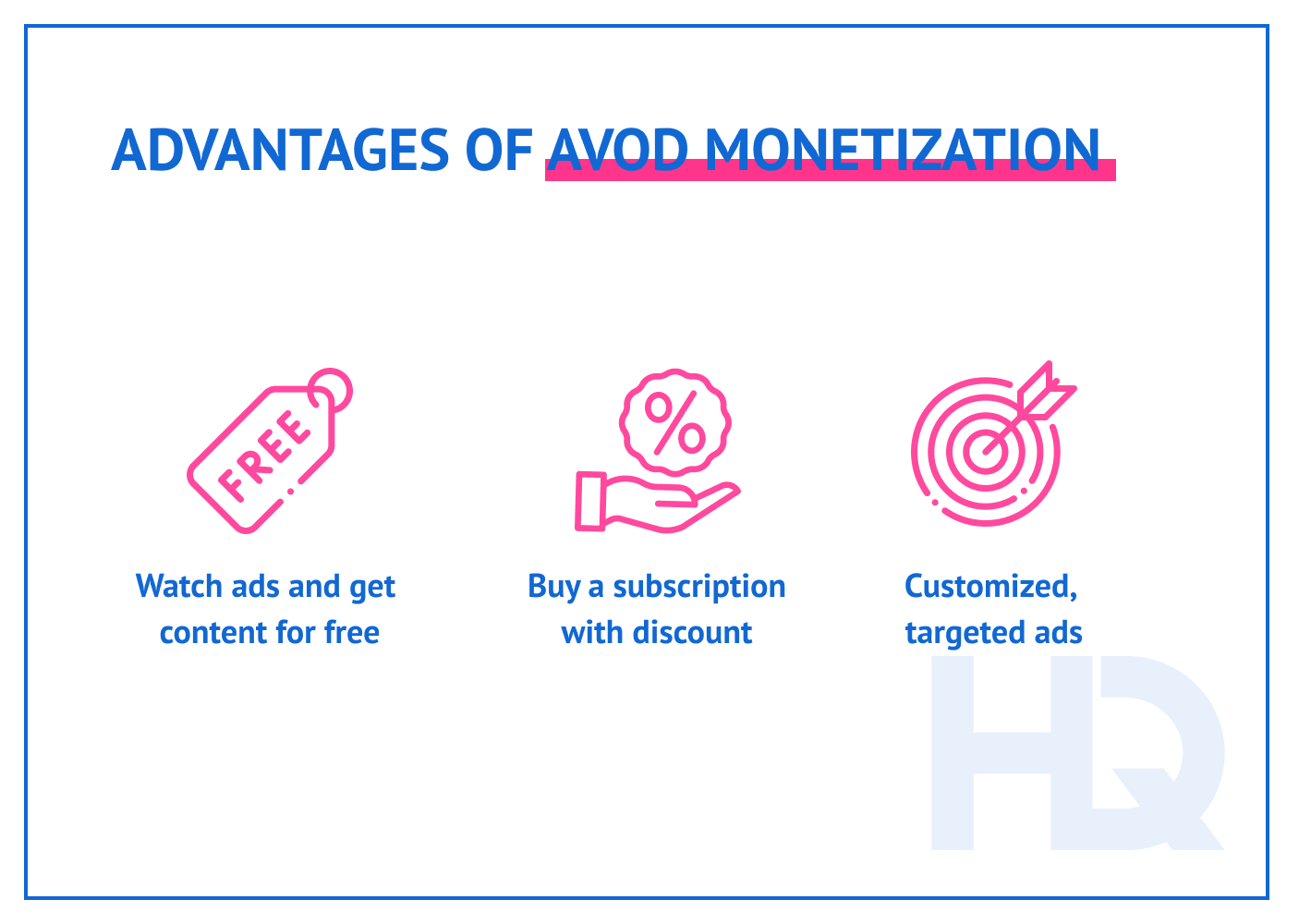
AVoD works great for OTT platforms that have a huge audience, a large number of views, and good engagement statistics. All these parameters are important for advertisers because the more engaged audience you have, the more sensitive to the ads they will be.
Advantages of Hybrid Monetization
The most amazing fact about using the hybrid method of monetization is that you can combine all the previously mentioned methods and gain benefits from them all.
A strategic combination of two or three monetization models will help businesses make more money while providing the users with convenient payment methods.
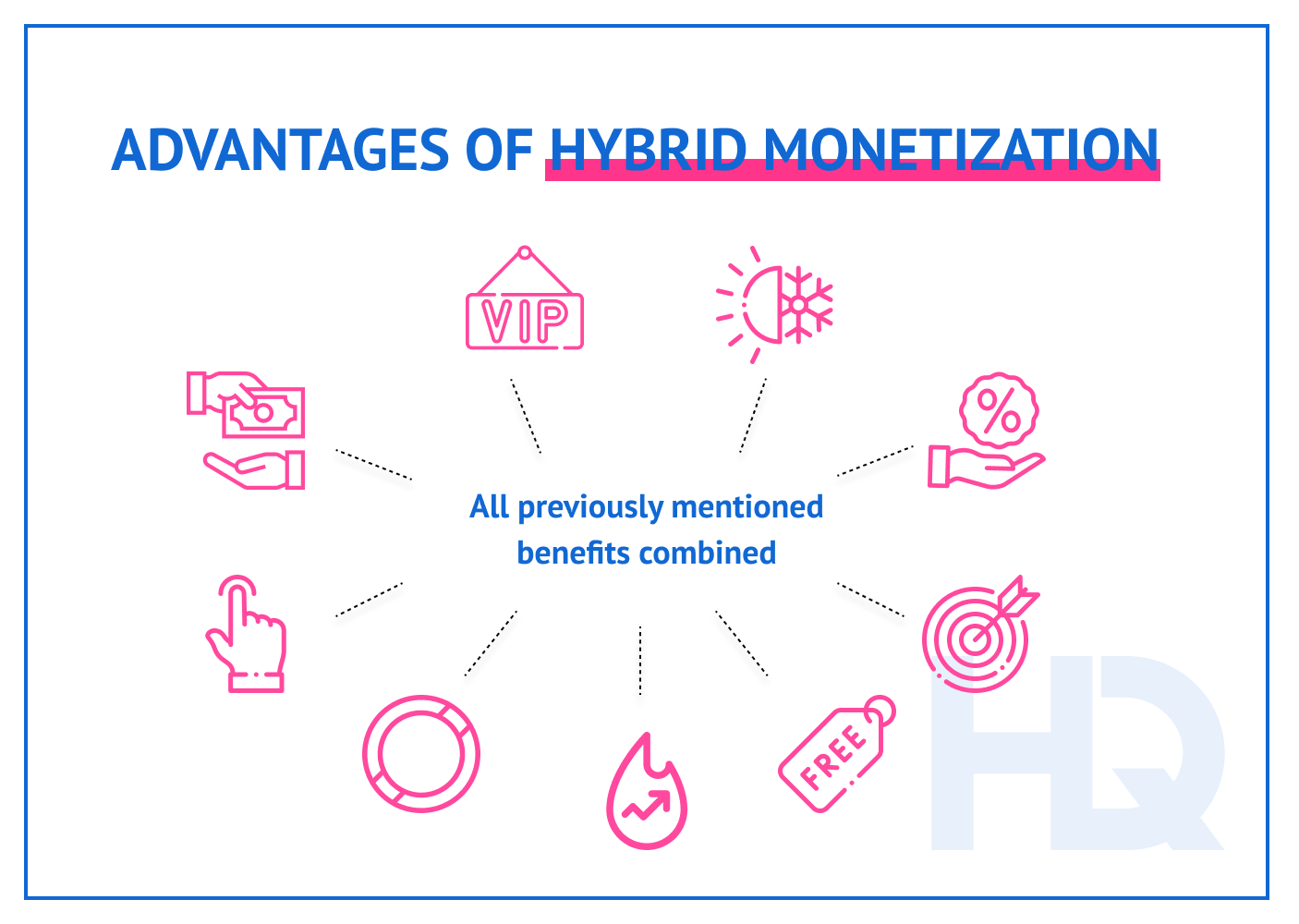
A wisely combined hybrid model can suit nearly any OTT business.
Businesses That Monetize Video Streaming
Now let’s take a look at some real examples of businesses that use this or that OTT monetization model.
Netflix
This is a good example of a SVoD model. Netflix allows users to enjoy all content as much as they like until the subscription is valid.
It has three subscription plans: Basic, Standard, and Premium to fulfill the needs of the most capricious users.
iTunes
iTunes uses the most straightforward monetization type – it allows for pay-per-view content consumption.
If the user wants to listen to a particular album or watch a movie, they have to buy it. Once it is purchased, the user has lifetime access to it.
YouTube
This well-known business is a perfect representation of a hybrid monetization model.
YouTube combines advertising, pay-per-view, and subscriptions in one complex monetization model. The primary method is AVoD, but there is also a subscription plan that lets you get rid of ads, and content that you can buy once.
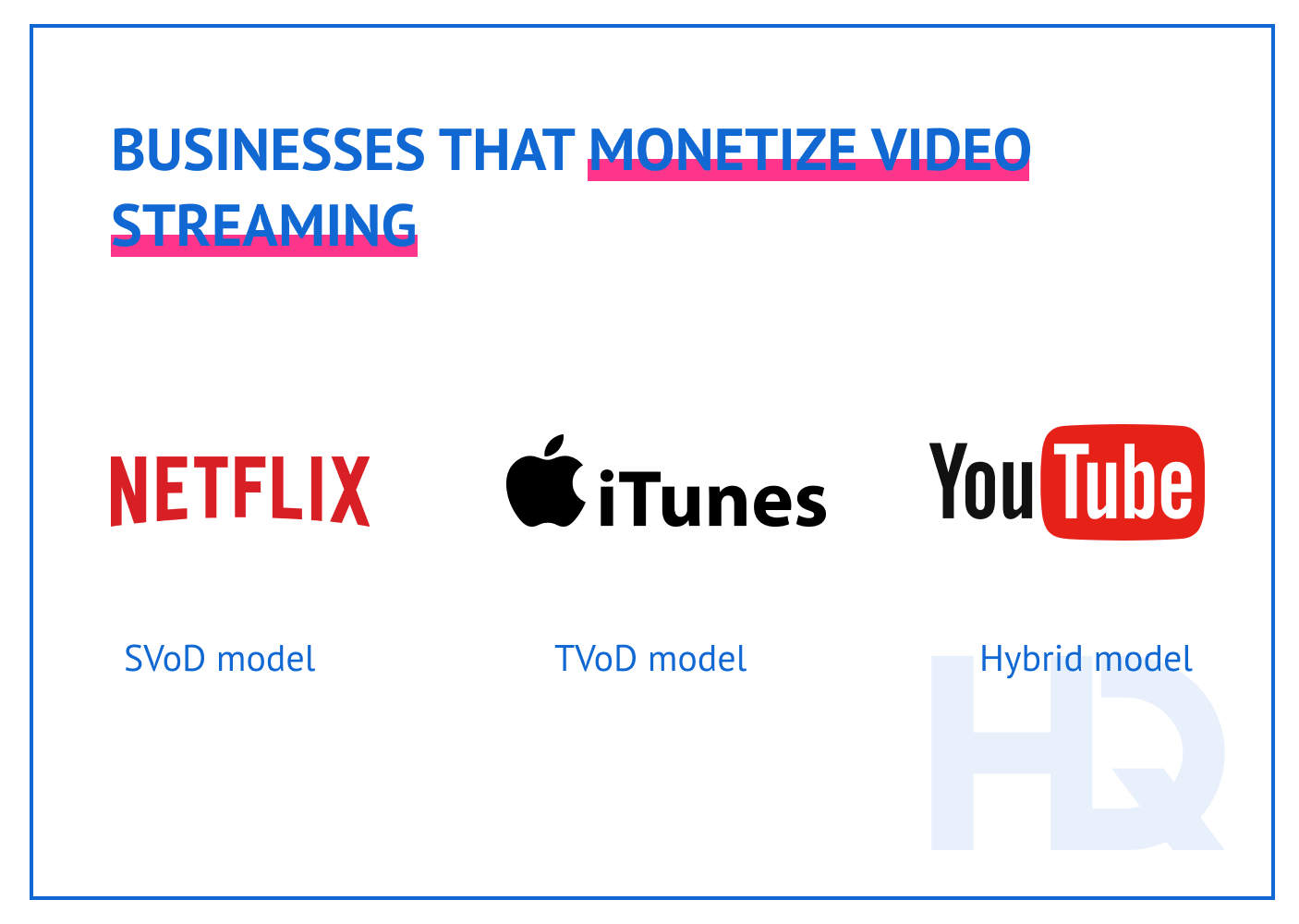
Creating an OTT platform – Is It Worth It?
As you can see now, many businesses leverage OTT platforms to make money, gather large audiences, attract advertisement partners, and deliver quality content for a fair price.
With an experienced development team that knows how to develop a fault-free product for different platforms, all you have to do is choose a relevant monetization model and start making money with your OTT streaming platform.
You can turn to HQSoftware anytime for:
- custom OTT solutions that will win you a market
- thought-out monetization model that will suit your solution the best
- customization of an existing OTT solution that lacks functionality, has bugs, or was built with outdated technologies
Contact us for a personal proposal.
Frequently Asked Questions
How does the OTT platform work?
What is a monetization platform?
How can I use OTT?
What is an OTT release?
How does OTT make profits?
Related Posts
View All
We are open to seeing your business needs and determining the best solution. Complete this form, and receive a free personalized proposal from your dedicated manager.

Sergei Vardomatski
Founder







